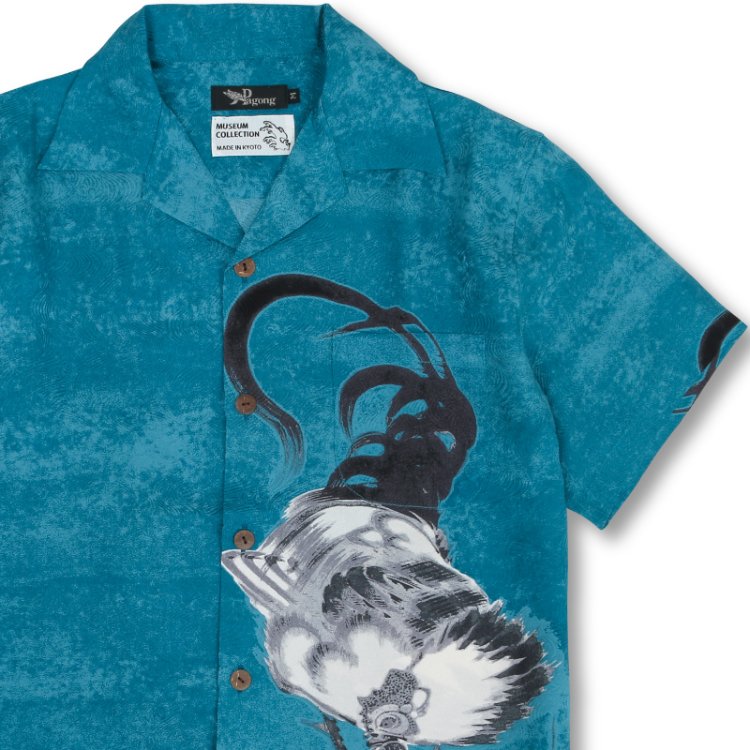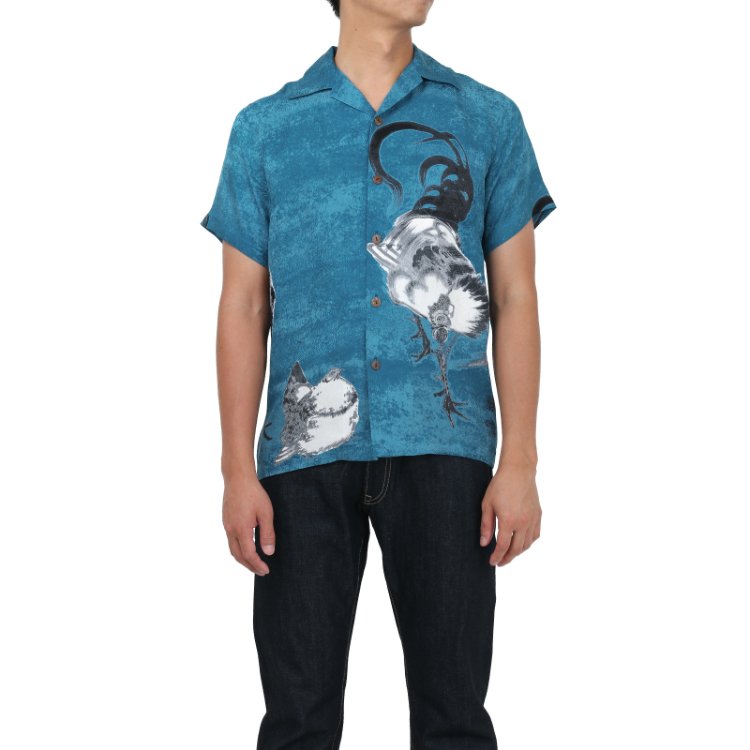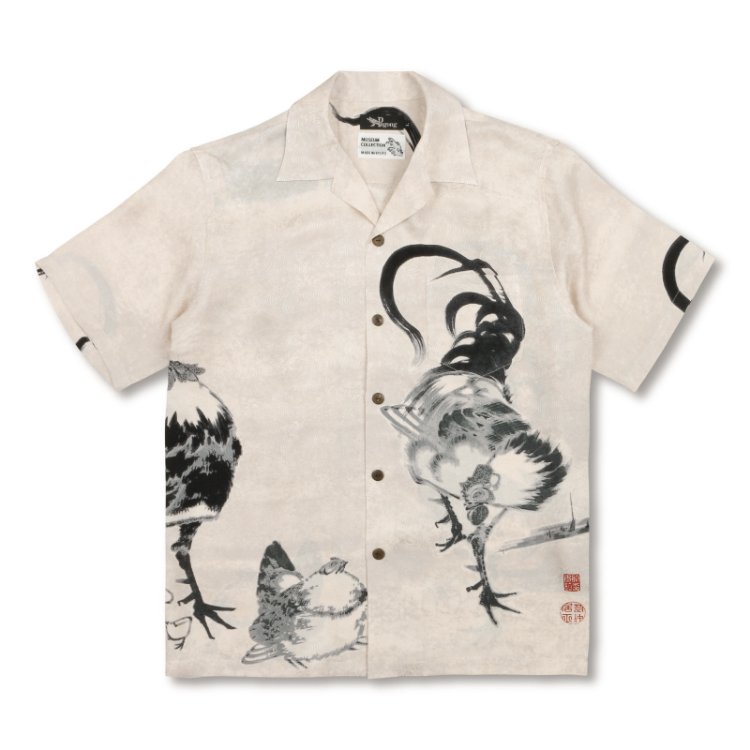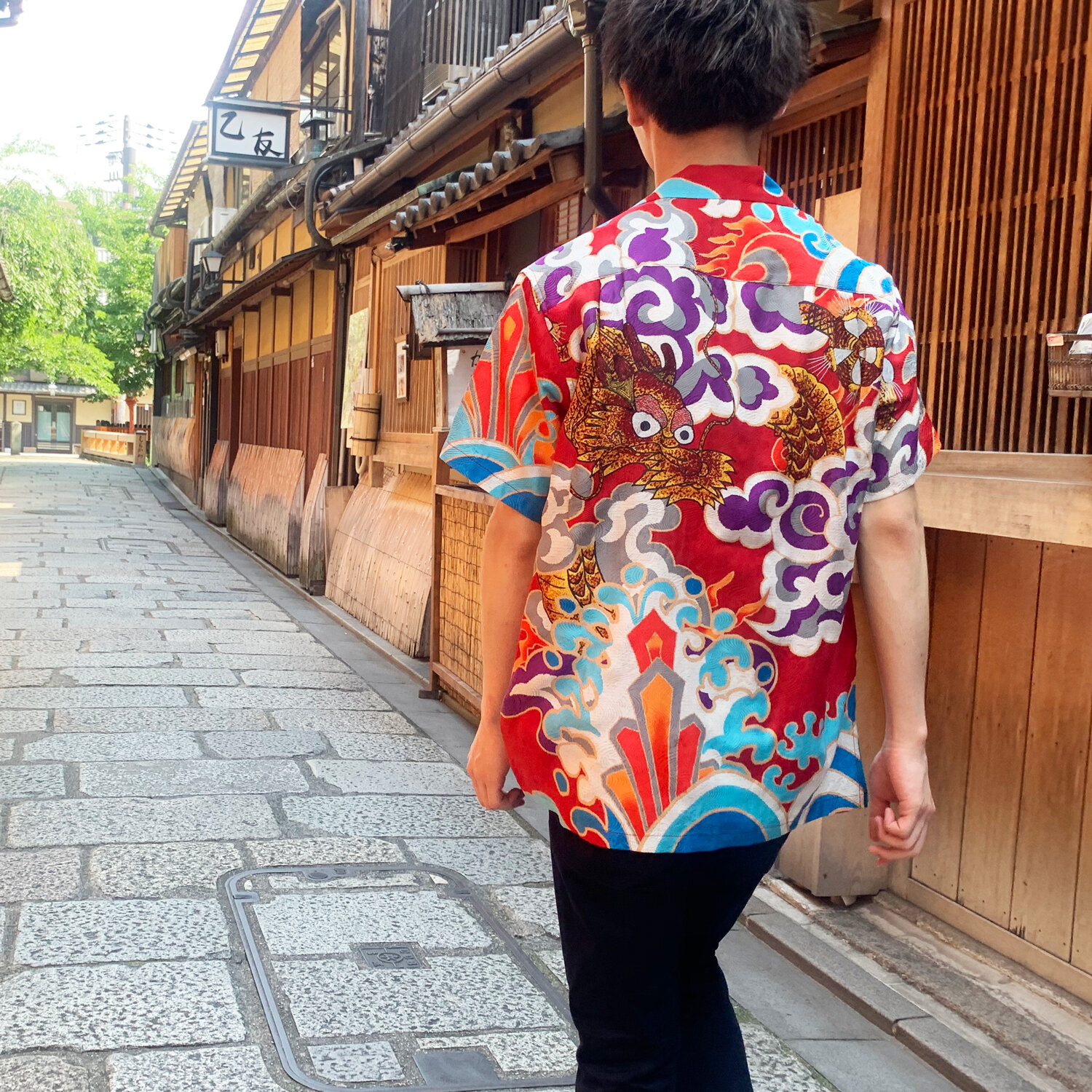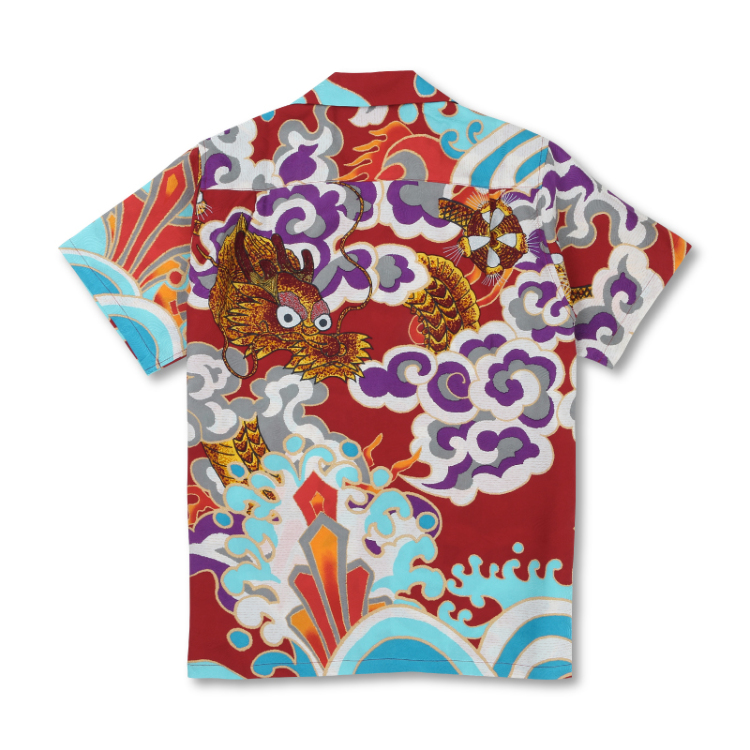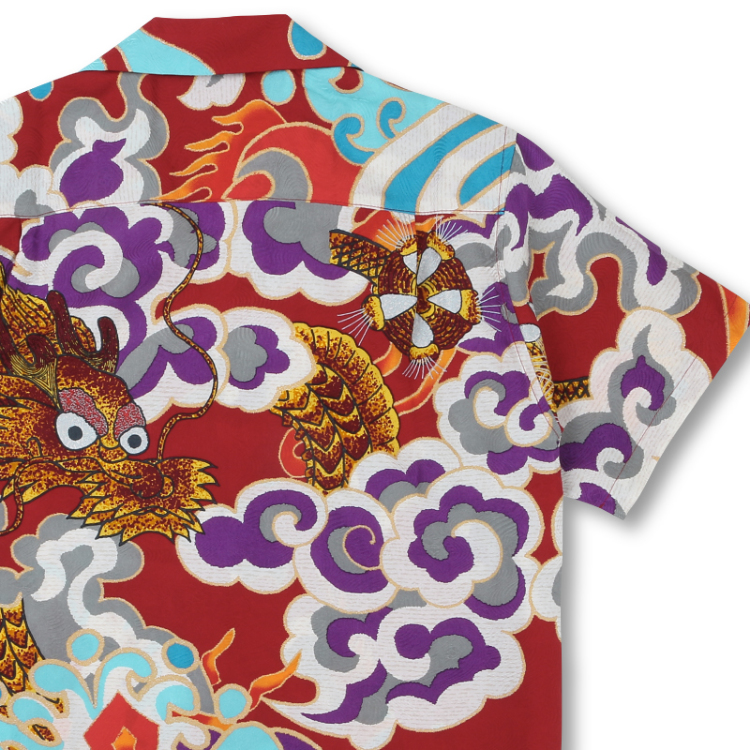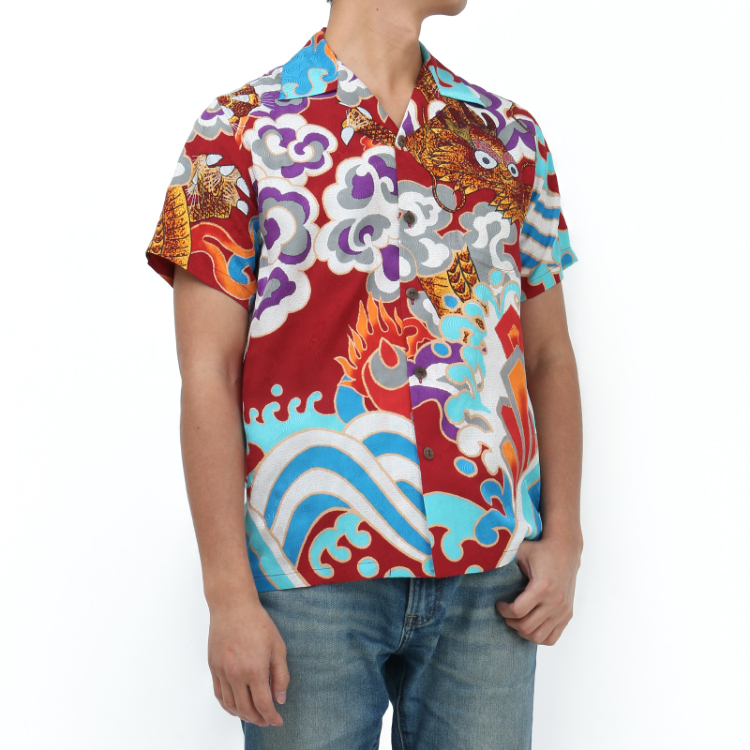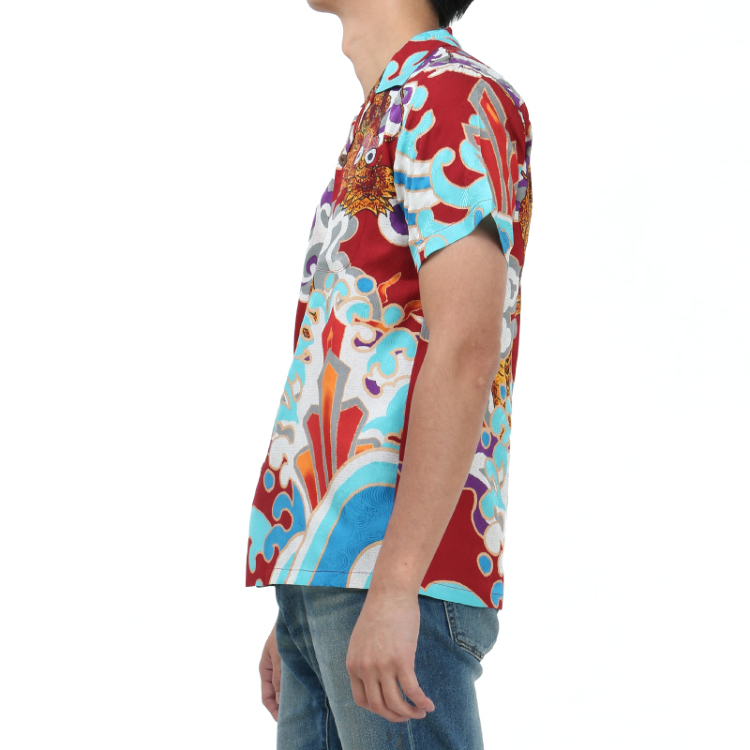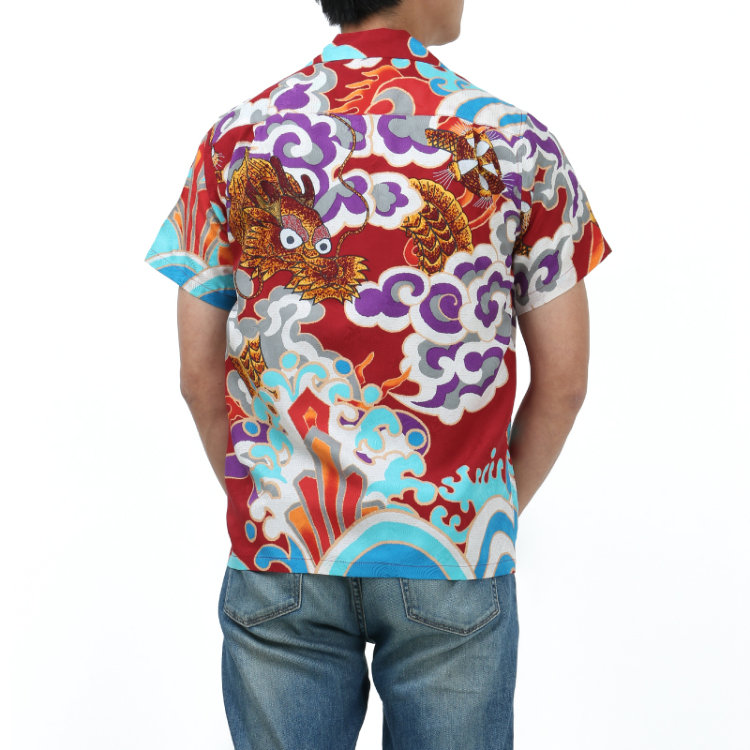JAKUCHU ITO Silk Aloha Shirt
Japanese name/ 鶏図押絵貼屏風 (Niwatorizu Oshiebari Byoubu)
-About-
Jakuchū Ito, (March 2, 1716 to October 27, 1800) was raised in the Nishiki area of Kyoto during the “golden age of art” the Edo era, before Japan opened its doors to the outside world.
Jakuchu was self-taught, and passionate about painting from childhood. A student of Buddhism at the Shokoku-ji zen monastery, he devoted himself to the art of painting, taking inspiration from classic Chinese paintings from the Yuan and Ming dynasties.
With nature as his teacher, he also began making thorough sketches of all natural phenomena; painting flora, fish, birds, and especially fowl, which he used to keep as pets in order to observe them closely, showing their true nature in a signature-style characteristic of Jakuchu.
At Pagong, in celebration of the 300th anniversary of the birth of Jakuchu Ito, we wish to breathe new freshness into this masterpiece with the use of a kimono dyeing technique called Kyo-Yuzen.
~A collaboration with the Hosomi Museum, Kyoto.
・Currency : US Dollar (USD)
・100% Silk (Custom-woven Jacquard )
・Made in Japan
・Classic-fit Aloha shirt
・Coconut buttons
・Dry-clean
Japanese name/ 鶏図押絵貼屏風 (Niwatorizu Oshiebari Byoubu)
-About-
Jakuchū Ito, (March 2, 1716 to October 27, 1800) was raised in the Nishiki area of Kyoto during the “golden age of art” the Edo era, before Japan opened its doors to the outside world.
Jakuchu was self-taught, and passionate about painting from childhood. A student of Buddhism at the Shokoku-ji zen monastery, he devoted himself to the art of painting, taking inspiration from classic Chinese paintings from the Yuan and Ming dynasties.
With nature as his teacher, he also began making thorough sketches of all natural phenomena; painting flora, fish, birds, and especially fowl, which he used to keep as pets in order to observe them closely, showing their true nature in a signature-style characteristic of Jakuchu.
At Pagong, in celebration of the 300th anniversary of the birth of Jakuchu Ito, we wish to breathe new freshness into this masterpiece with the use of a kimono dyeing technique called Kyo-Yuzen.
~A collaboration with the Hosomi Museum, Kyoto.
・Currency : US Dollar (USD)
・100% Silk (Custom-woven Jacquard )
・Made in Japan
・Classic-fit Aloha shirt
・Coconut buttons
・Dry-clean
Japanese name/ 鶏図押絵貼屏風 (Niwatorizu Oshiebari Byoubu)
-About-
Jakuchū Ito, (March 2, 1716 to October 27, 1800) was raised in the Nishiki area of Kyoto during the “golden age of art” the Edo era, before Japan opened its doors to the outside world.
Jakuchu was self-taught, and passionate about painting from childhood. A student of Buddhism at the Shokoku-ji zen monastery, he devoted himself to the art of painting, taking inspiration from classic Chinese paintings from the Yuan and Ming dynasties.
With nature as his teacher, he also began making thorough sketches of all natural phenomena; painting flora, fish, birds, and especially fowl, which he used to keep as pets in order to observe them closely, showing their true nature in a signature-style characteristic of Jakuchu.
At Pagong, in celebration of the 300th anniversary of the birth of Jakuchu Ito, we wish to breathe new freshness into this masterpiece with the use of a kimono dyeing technique called Kyo-Yuzen.
~A collaboration with the Hosomi Museum, Kyoto.
・Currency : US Dollar (USD)
・100% Silk (Custom-woven Jacquard )
・Made in Japan
・Classic-fit Aloha shirt
・Coconut buttons
・Dry-clean
All of our 100% silk aloha shirts have our logo of “sea turtle and wave”, woven into our custom-made silk fabric.
We take pride in our clothing being designed, dyed, steamed, washed, and sewn entirely in Kyoto, Japan.
Over this intricately woven pattern, we dye our designs…
Pagong’s personal archives house 6000 Kimono patterns, which we choose from, as well as from museum archives.
If there is anything we can help you with, please feel free to let us know.
Contact Form >> www.pagongkyoto.com/contact


